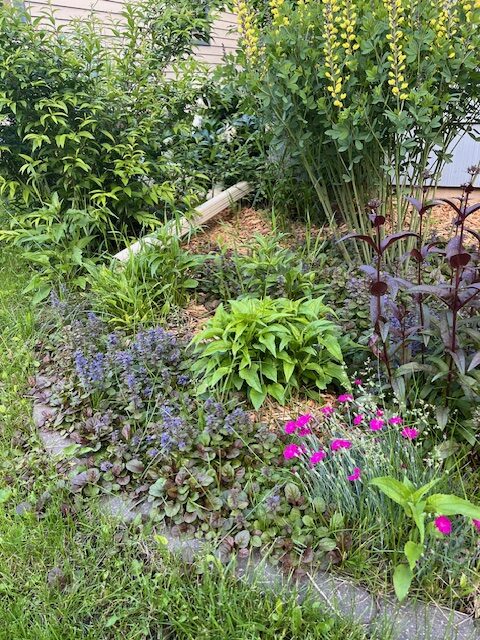Talking Plants
Jillian Patrie | University of Minnesota Yard and Garden Extension
The Red River Valley and much of the surrounding area have been experiencing a lot of rainfall recently, which presents many challenges and advantages when it comes to gardening. The healthy amount of rain has replenished the moisture we didn’t see this winter from snow, but it has also flooded fields, gardens and yards alike. So, how can plants help manage stormwater when we experience frequent and heavy rain events?
Many native prairie plants are adapted to withstand changing weather patterns and can be a great addition to any landscape. A rain garden, more specifically, is a selection of drought and flood tolerant plants that are used in areas of rainwater runoff such as downspouts, curbs or other hard surfaces and in low lying areas. Some of these gardens are created in natural areas of water collection or can be installed to be an area of stormwater collection from other sources. Rain gardens are most used to collect rainwater from a roof, driveway, street or sidewalk. Why use a rain garden to collect stormwater?
Rain gardens collect and filter stormwater and are a habitat for birds, animals and pollinators. Stormwater that normally goes into storm drains or floods streets and parking lots is collected and cleaned. It then can replenish groundwater and the plants provide food and shelter for wildlife. Rain gardens are beneficial in many ways and can be easily installed with the following tips.
Location will be determined by the rainwater source being collected, in most cases near the end of a downspout from a gutter system. To determine the size, calculate the square footage of the roof or hard surface (this can be done on google maps). Then a quick soil filtration test needs to be done; dig a wide hole in the space of the potential rain garden, 10” deep and fill it with water, if the water is gone in 48 hours you are good to go! A typical size for a rain garden is 100-300 square feet at a depth of 3” for clay soil and a depth of 3-6” for sandy soil. A few other things to consider when planning your garden are the distance from buildings, septic systems, drain fields, drinking wells and utility lines.
The plants you choose will need to handle various soil moisture conditions, like drought or prolonged sitting water. Many native perennials and annuals will fit the bill, including sedges, swamp milkweed, Joe Pye Weed, aster and many more. Check with local or native plant nurseries to find the plants that will work best for your rain garden.
For more information on rain garden design and plant selection take a look at this U of M Extension article https://extension.umn.edu/landscape-design/rain-gardens or visit https://bwsr.state.mn.us/raingardens.
For more information on this article or for local assistance contact your Clay County Extension Educator, Jill Patrie at 218-299-7338 or by email at patri350@umn.edu.


